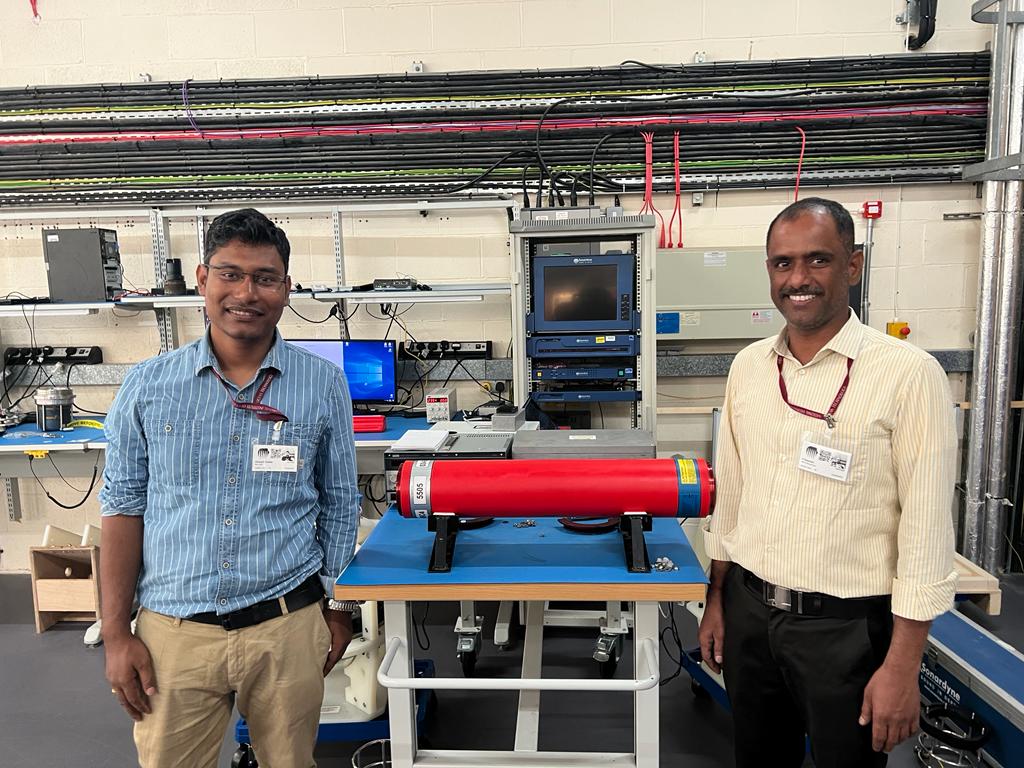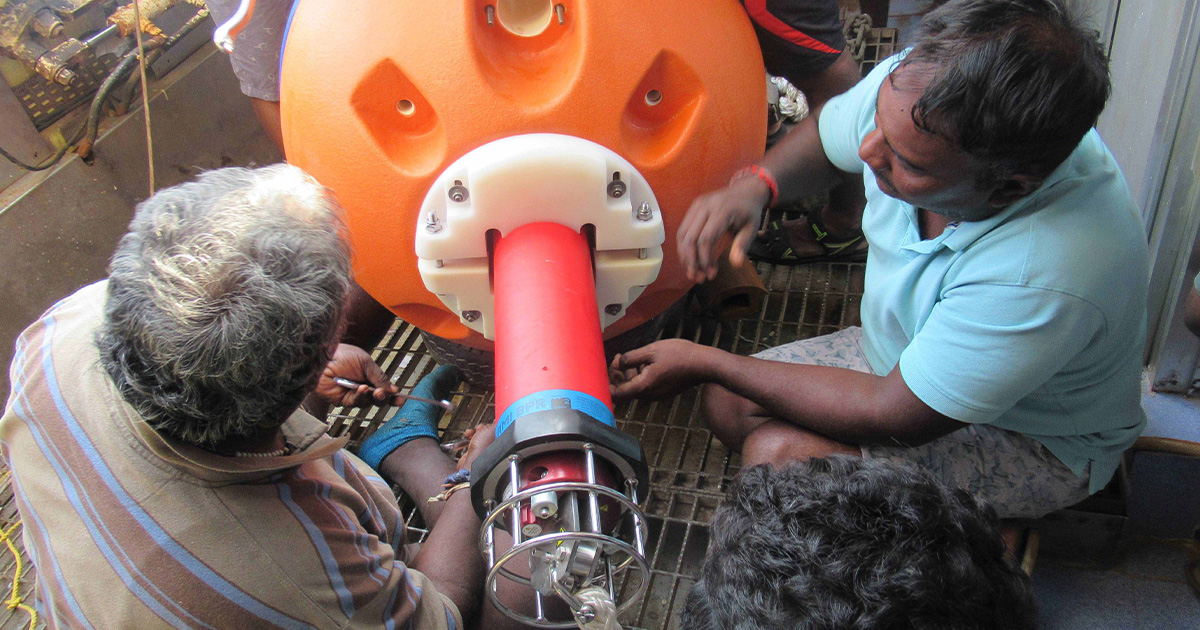A network of deep-water acoustic sensors that provides India’s coastal communities with an early warning of tsunami waves is being upgraded by marine technology company Sonardyne to extend both their endurance and capability.
Deployed at key locations in the Bay of Bengal and the Arabian Sea, the network of Sonardyne’s Bottom Pressure Recorders (BPRs) is owned and operated by India’s National Institute of Ocean Technology (NIOT) as part of the country’s Tsunami Early Warning System (TEWS).
The BPRs were first installed in 2007, as part of NIOT’s national tsunami detection system, which was conceived following the deadly Boxing Day Tsunami of 2004.
The BPRs detect the characteristic changes in water pressure (as little as 1 cm in 4,000 m depth) caused by an earthquake in the deep ocean. If a tsunami wave is detected, an alert message is transmitted up to a satellite buoy on the surface. From there, it is relayed to the national Tsunami Warning Centre onshore for comparison with recent seismic activity. If validated, a widescale alarm is raised to alert vulnerable communities.
Following a 10-year life refurbishment in 2017, the BPRs are now being upgraded to Sonardyne’s 6G hardware and Wideband 2 communications standard. The installation of low power electronics. new lower power consumption pressure sensors and doubled battery capacity of these maxi BPRs will significantly reduce maintenance visits and costs. Additionally, the acoustic telemetry signals used to transmit data to the surface will also now be fully digital, providing greater resilience to noise interference in the water column, as well as increasing bandwidth by ten-fold (from 600 bps to 6000 bps).
The first batch of upgraded BPRs arrived in India in 2022, with further batches planned for shipment in 2023. In addition, Sonardyne are also supplying a large pool of spares to maintain a continuously available TEWS capability. These include floats and fittings for the larger Maxi BPRs being supplied, as well as transceivers for the surface buoys to communicate with the BPRs. NIOT are planning to use the upgraded capability to extend the number of permanently occupied stations.
Each BPR is a customized version of Sonardyne’s Compatt transponder—a versatile subsea instrument that has a wide range of autonomous monitoring and measuring applications within offshore energy, survey, and ocean science.

NIOT staff on a recent training visit to Sonardyne Headquarters as part of their ongoing support package. (Image credit: Sonardyne)
Sonardyne’s BPRs benefit from being small and self-contained, with no cables, exterior sensors, or batteries to interface, making them easy to deploy and more reliable. These features, alongside long battery life, reliable through-water communications and Sonardyne‘s expertise in long-endurance underwater monitoring applications, are the reasons why they were chosen for the Indian Ocean Tsunami Detection System back in 2007 and continue to protect their coastal communities 16 years later.



